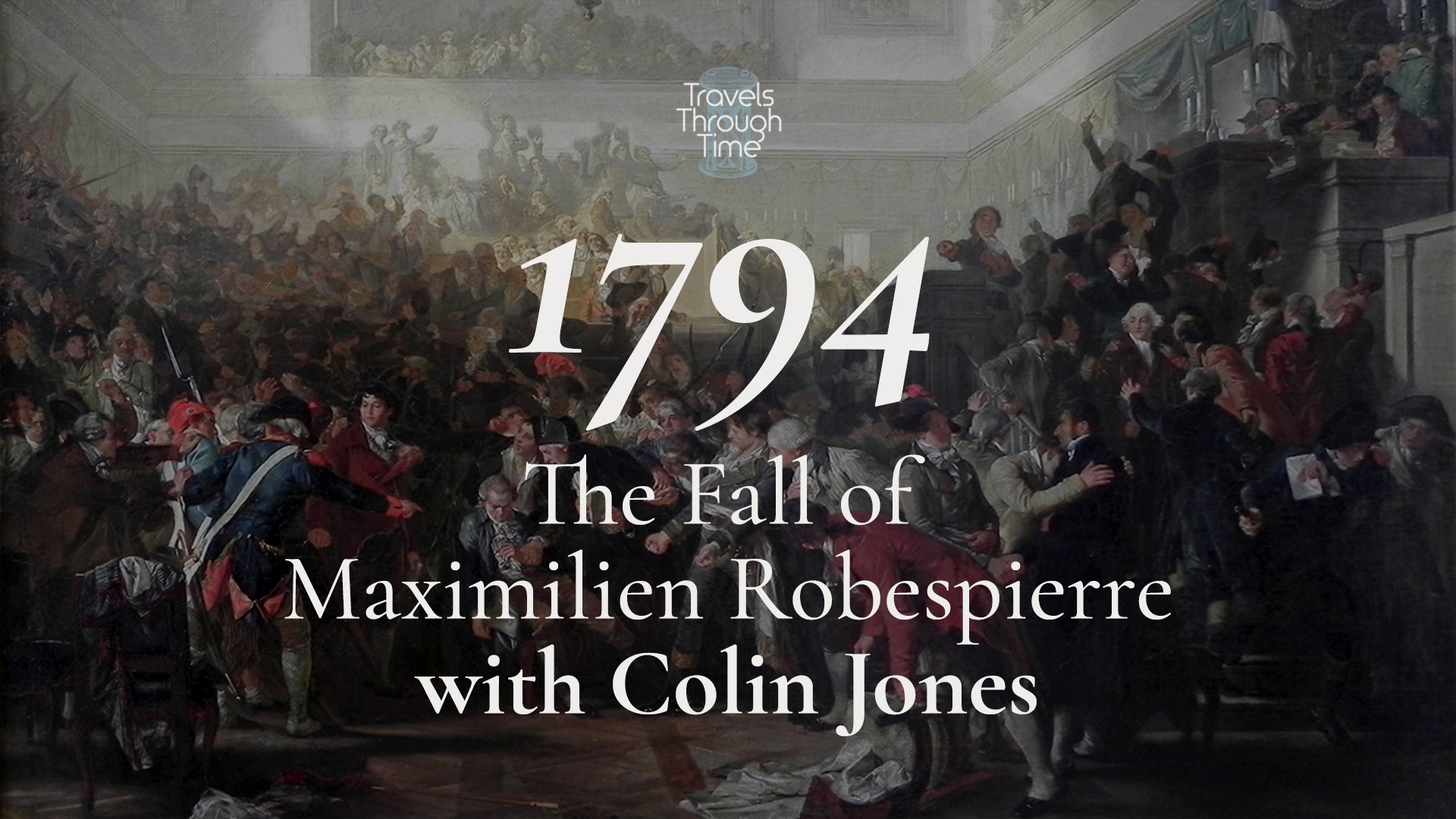James Gillray and a Revolution in Satire: Tim Clayton (1792)
Tim Clayton, author of ‘James Gillray: A Revolution in Satire’
As today’s guest Tim Clayton explains, 'the late eighteenth-century mixed the extremely crude with the extremely fine in a fascinating sort of way.’ The grand master of this potent concoction was the greatest political caricaturist of modern times: James Gillray.
*** [About our format] ***
To picture Britain in the final, tempestuous years of the eighteenth-century is to see James Gillray’s wild and colourful caricatures. There’s the rake-thin prime minister, William Pitt the Younger; the imbecilic, goggle-eyed King George III; the offensively ugly Queen Charlotte, and the great, solid everyman ‘John Bull’ resisting the fashions of the day.
All these became stock characters for Gillray over the course of a long career that began around the time of the American War of Independence and only ended shortly before Waterloo. During these four decadent and revolutionary decades, people of all classes looked to Gillray for commentary on the political and cultural stories of the day.
Gillray’s responses were not always predictable. He could switch sides or even argue against himself within the same piece of work. But while the message fluctuated, the quality remained high. There was a vibrance to Gillray’s work, along with a sense of brutality and daring that was rarely found elsewhere.
One of Gillray’s first prints of 1792 was ‘A Sphere, Projecting Against a Plane’, which showed the tall and thin prime minister William Pitt the Younger standing beside the Countess of Buckinghamshire - a heavily obese, a gifted amateur thespian. (Met Museum)
In this episode of Travels Through Time we talk to Tim Clayton, an expert in the printed materials of this period and the author of a sumptuous new illustrated biography called James Gillray: A Revolution in Satire. To better understand Gillray’s character and the historical context in which he worked, Clayton takes us back to the year 1792.
1792 was a loaded time in British history, marked by the appearance of works like Thomas Paine’s Rights of Man. Across the Channel the French Revolution had gained worrying momentum and King Louis XVI himself was being put on trial. While many, like the young Romantic William Wordsworth, had welcomed the opening phase of the French revolutionary story (‘Bliss was it in that dawn to be alive,. But to be young was very heaven!’), in Britain a counter-revolutionary movement was gathering.
In his studio above Hannah Humphrey’s shop in Old Bond Street, Gillray found himself at the centre of this. For years caricaturists like him had been working with increasing license. No one was spared from Gillray’s list of targets. By 1792, however, there was a feeling among the establishment that Britain’s lusty free press was out of all control. If nothing was truly sacred anymore, then what was to prevent Briton from going the way of France?
Here was the key dynamic that Gillray had to confront in 1792. As he entered his full maturity as an artist and settled into a professional and domestic relationship with Hannah Humphrey, he had to decide how to respond to a royal proclamation against seditious writing which targeted kind of artistic work that he was doing.
A difficult character to pin down, as Clayton explains, some of Gillray’s actions and caricatures during this year offer glimpses of his inner-character. He reveals himself to be a nimble political operator, a true student of literature and a commercially-minded man.
While 1792 would finish off several of his peers, Gillray managed to navigate the year with considerable skill. His career was not curtailed, instead it was poised to develop still further as Britain and France moved into a new period of conflict: the Napoleonic Wars.
The characters and stories that feature in this episode of Travels Through Time form part of Clayton’s latest book. James Gillray: A Revolution in Satire is out now.
*** Listen to the podcast ***
Show notes:
Scene One: February/March 1792 London and Hannah Humphrey’s house at 18 Old Bond Street.
Scene Two: 21 May 1792. The Royal Proclamation against seditious writing.
Scene Three: December 1792. The French King is on trial and Gillray releases his series of ‘pro bono publico’ prints.
Memento: A fire screen, painted on both sides by Gillray, as presented by the artist to Hannah Humphrey.
People/Social
Presenter: Peter Moore
Guest: Tim Clayton
Production: Maria Nolan
Podcast partner: Ace Cultural Tours
Theme music: ‘Love Token’ from the album ‘This Is Us’ By Slava and Leonard Grigoryan
Follow us on Twitter: @tttpodcast_
See where 1792 fits on our Timeline
About Tim Clayton
Tim Clayton was educated at Cambridge University where he specialised in the graphic satire of James Gillray. He is the award winning and bestselling author of a number of books on naval and military history, including the winner of the 2008 Mountbatten Literary Award, Tars, and the critically acclaimed Trafalgar.
Gillray in 1792
Anti-Saccharrites
This print caricatures King George and his wife Charlotte drinking tea without sugar and urging their uncompliant daughters to do the same. (Wiki Commons)
French Liberty – British Slavery, December 1792
Listen on YouTube
Complimentary episodes
The Battle of Waterloo: Bernard Cornwell (1815)
In today’s brilliantly analysed episode, the much-loved novelist Bernard Cornwell takes us back to that fierce, bloody, epoch-defining event: the Battle of Waterloo.
Radicalism, madness and laughing gas: Mike Jay (1799)
In this episode of Travels Through Time the author and cultural historian Mike Jay takes us back to 1799 – a year of anxiety, action and excitement on the cusp of a new century.
The Fall of Maximilien Robespierre: Colin Jones (1794)
Exactly 227 years ago today, on 9 Thermidor in the Revolutionary Calendar, or 27 July in ours, Maximilien Robespierre fell from power in Paris.










